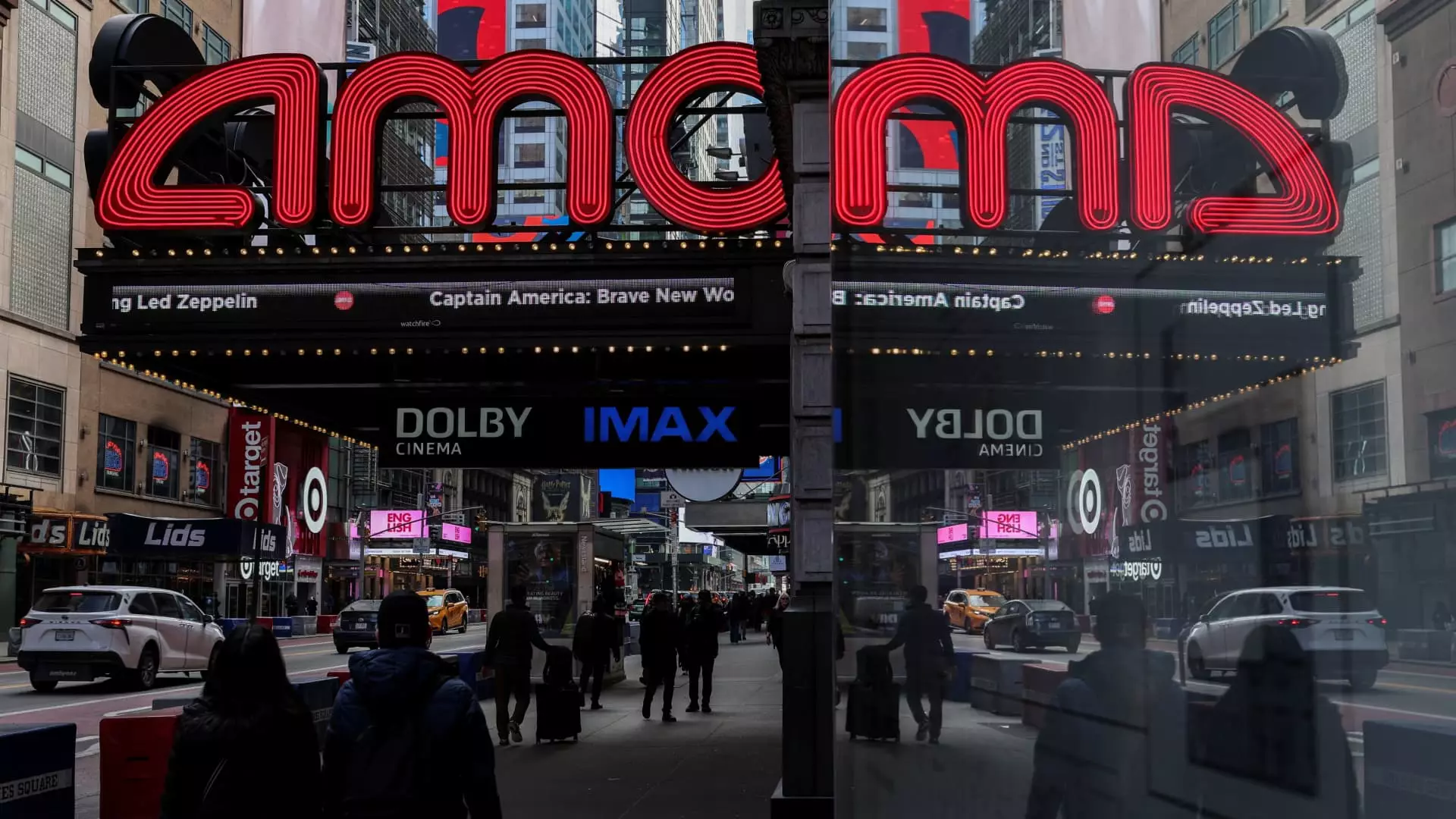In a bold move emblematic of its ambition, AMC Entertainment has announced plans to enhance its premium screening offerings, solidifying the modern moviegoing experience as a cornerstone of its business. By adding 40 new Dolby Cinema theaters across the United States by 2027, AMC aims to fortify the allure of premium formats amidst a cinematic landscape that is increasingly defined by spectacle. This significant expansion will result in a 25% increase in AMC’s Dolby Cinema locations, extending the total to over 200. While this may sound impressive, one must question whether this push towards the premium experience will ultimately alienate a dedicated audience that craves accessibility over extravagance.
A Trend Driven by Blockbusters
It is interesting to note that the impetus for this expansion is not a general increase in cinema attendance but the ravenous appetite for blockbuster films. With mega-hits like “Oppenheimer,” “Avatar: The Way of Water,” and “Dune” leading the charge, it seems that the industry is banking on audiences’ desire for large-scale, visually arresting experiences in grand auditoriums equipped with the latest technology. Yet, this model raises a critical concern: as cinema chains like AMC prioritize premium formats and higher ticket prices, do they risk alienating a significant portion of their audience?
The allure of premium large format (PLF) screens is unmistakably tied to the Hollywood blockbuster machine, where audiences flock to see explosive action sequences on vast, immersive screens enhanced by advanced audiovisual technology. However, this phenomenon risks blinding the cinema industry to the reality that many viewers—a diverse and economically varied audience—are increasingly priced out of what should be an accessible shared experience.
A Luxury for a Privileged Few?
The truth is, the average ticket price for a premium format screening hovers just below $17, marking an 8% increase since 2021. While those who can afford the splurge may bask in plush seating and enhanced sound, many average cinema-goers are left to wonder if they will have the opportunity to enjoy a film in a setting that transcends the ordinary. The growing trend of prioritizing lavish cinematic experiences threatens to accentuate the divide between those who can afford to indulge in high-dollar entertainment and those who must contend with lower-quality, traditional screenings.
The allure of these premium formats comes at a price—both literal and figurative. As more of AMC’s resources are funneled into creating extravagant viewing environments, it may become increasingly challenging for smaller films, indie projects, and diverse narratives that don’t fit the blockbuster mold to find a place in the auditorium. This trend feels like an echo of the evolving entertainment landscape—a landscape that favors the blockbuster over the indie with a lamentable disregard for the value of diversity in storytelling.
A Critique of Box Office Metrics
Moreover, the emphasis on PLF spaces and their corresponding box office receipts as a measure of success does little to push the envelope of cinematic storytelling. While PLF formats represented just 9.1% of the domestic box office with approximately $600 million in revenue in 2024, it raises the question: is the future of film presentation being dictated by financial gain at the risk of artistic integrity? The fastest-growing segment of box office revenue is often driven by a small cluster of titles, leaving numerous films struggling for survival in the shadows.
As the moviegoing experience becomes ever more exclusive, one can’t help but sense an impending reckoning for film enthusiasts who crave cinematic depth over visual grandeur. The current state of affairs showcases a cinematic landscape that increasingly reflects economic stratification rather than diverse storytelling, emphasizing profit margins over artistic expression. With AMC and other chains fully dedicated to courting the blockbuster audience, one must wonder if the industry as a whole is losing sight of what it means to be a community bound by the shared experience of film.
Ultimately, the expansion into premium formats may appear commendable on the surface, but a critical lens reveals the underlying truths and consequences of this trend. As Hollywood continues to churn out mega-budget blockbusters, let us not forget the soul of cinema lies in its ability to connect people—an art that thrives when it is accessible to all.


Leave a Reply